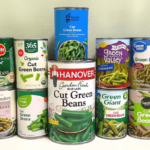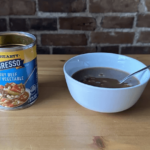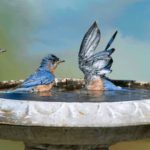Now Reading: Nest-Building Plants Every Hummingbird Lover Should Have In Their Garden
-
01
Nest-Building Plants Every Hummingbird Lover Should Have In Their Garden
Nest-Building Plants Every Hummingbird Lover Should Have In Their Garden
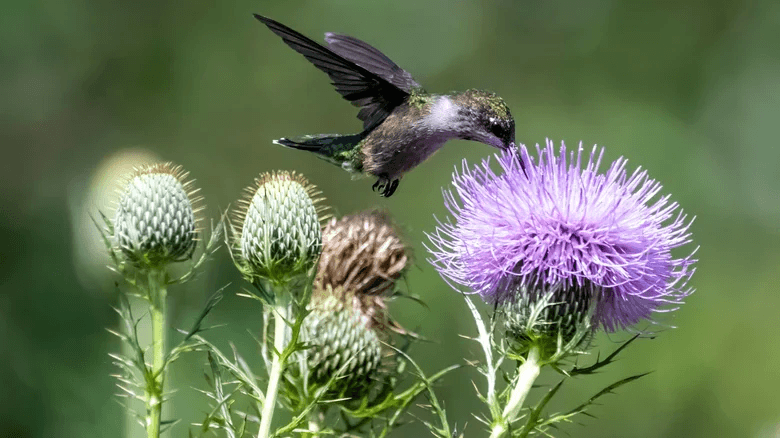
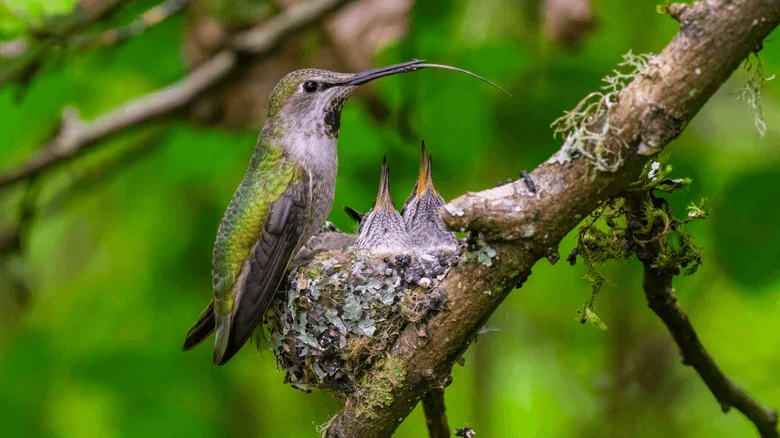
Even if you don’t consider birdwatching to be your favorite hobby, there’s no denying that observing hummingbirds flit around your yard can provide endless entertainment. Not only do they have remarkable feeding habits, but these fascinating creatures are also skilled architects when building their nests. Using materials like moss, spider silk, and fluffy plant down, female hummingbirds expertly craft these tiny structures that blend into the branches. By incorporating plants that provide the materials they need to begin constructing, feathered friends are even more likely to view your yard as a top choice to raise their young.
Creating a bird-friendly garden at home is a rewarding way to enjoy watching hummingbirds while giving them everything they require to thrive. These tiny fliers choose nesting sites that meet their basic needs for building and survival. They look for small deciduous trees or dense shrubs that provide sturdy branches and good cover, ideally near where food sources are readily available. Some flowers that attract hummingbirds, like clematis, will offer both nest-building materials and a steady supply of nectar, while other plants come with a sturdy nesting site. Determining the most common species in your area can help you choose the best varieties. Understanding their nesting season and habits allows you to select plants that bloom when colorful visitors are most likely to stop by your yard. Here are some of the top nest-building plants to consider.
Cinnamon fern
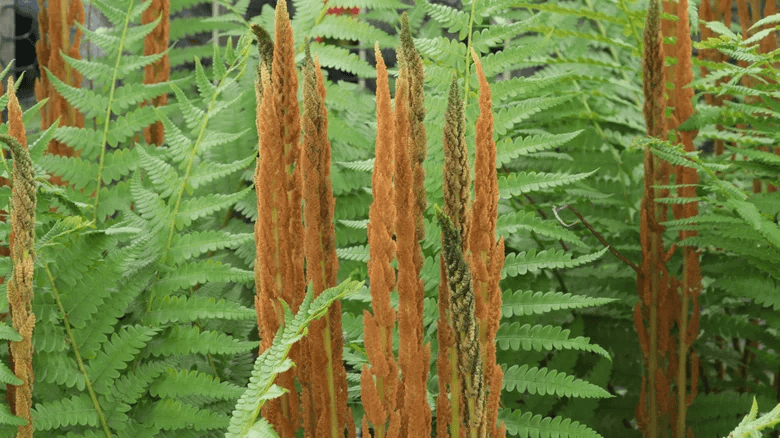
Female hummingbirds work tirelessly to create small, cup-shaped nests that are insulated, soft, and stretchy enough to expand as their little ones grow. After constructing a sturdy base out of twigs and other plant parts, they search for plush materials, like the fibers from cinnamon fern (Osmundastrum Cinnamomum) fronds, to add a soft lining. The fuzzy inner area gently cradles the eggs while keeping them warm. Because hummingbirds have evolved with native plants, they’re more likely to search for species they’ve seen growing in nature. Cinnamon fern grows all over North America, making this familiar plant more attractive to hummingbirds than non-native species. Additionally, it’s a host plant to several insects, like caterpillars, which provide the necessary protein for hummingbirds.
Hardy in zones 4-10, cinnamon fern is one of the best native plants for landscaping in almost any region in North America. Its lush foliage not only looks beautiful in nearly any area of your garden, but it also provides the perfect spot for hummingbirds to get protection from predators or the elements. Their distinctive fronds appear in spring as fuzzy fiddleheads before turning a brownish shade, looking similar to cinnamon sticks. This award-winning plant is low-maintenance, growing up to six feet tall and three feet wide once established. Although it prefers dappled shade, cinnamon fern can grow in full sun if it’s frequently in standing water. Choose a soil blend that’s slightly acidic, humusy, fertile, and well-draining, but do not let it dry out between waterings.
Thistle

Although thistle is often considered a weed, don’t be so quick to pull out the herbicide. While some species of thistle are non-native and considered invasive, several varieties naturally grow in North America. Field thistle (Cirsium discolor), for example, is a native species that is nectar-rich and beneficial for several animals, including hummingbirds. Thistle is a hummingbird favorite because it’s waterproof, helps insulate the eggs, and is easy for them to work with. Additionally, these small birds require multiple meals each hour to survive, sometimes stopping for nectar or insects every 10 minutes. Because they feed so much, they must live near food sources like thistle when raising young. So, leave some native varieties in your yard to provide a valuable resource for hummingbirds.
There are several varieties of thistle, and you may already have some growing in your backyard. Field thistle commonly grows in the eastern half of the United States, while species like wavyleaf thistle (Cirsium undulatum) are more common in western states. Easily grown, both thistles prefer full sun and can grow in many well-drained soil types. Most of these flowers are relatively drought-tolerant and rarely need supplemental watering, though it depends on the species. Although some thistles die after flowering, they will self-seed, allowing new plants to pop up year after year.
Dandelion
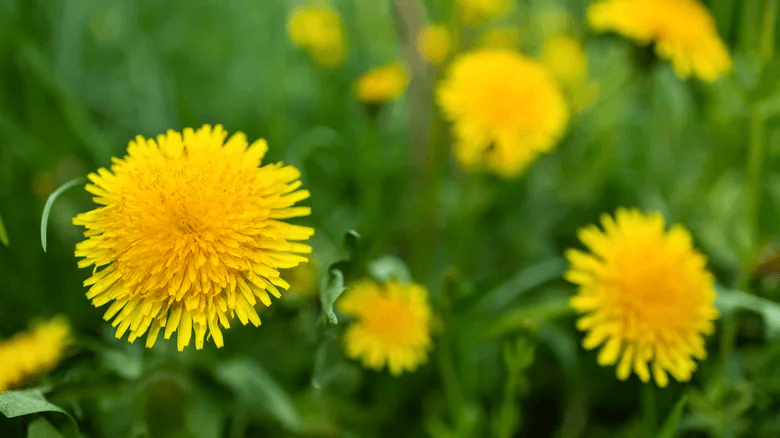
Native to Eurasia, dandelions (Taraxacum officinale) were brought to North America in the 1600s by settlers to cultivate for food and medicinal purposes, though they’re now one of the most common weeds in our yards. Although they’re considered invasive in Alaska and Oregon, dandelions don’t pose much of an ecological threat in most areas. Alternatively, hummingbirds love using these tiny flowers to build their nests. If your childhood included making wishes on their white seedheads, you already know how light and fuzzy they are. Dandelion down makes the perfect lining to keep a hummingbird mom’s nest insulated and waterproof while being gentle on the hatchling’s delicate skin.
If you already have dandelions popping up in your yard, you likely realize encouraging them to stay isn’t much of an issue. Low maintenance is an understatement, as they grow in zones 3-9 and can tolerate full sun to full shade conditions. They aren’t picky about soil either, though they prefer fertile, well-drained soil. To grow dandelions in your yard, sow the seeds 1/4 an inch below the soil six weeks before the expected last frost. Dandelions thrive when the soil is moist, so give them a good watering when the top two inches of soil is dry.
Milkweed
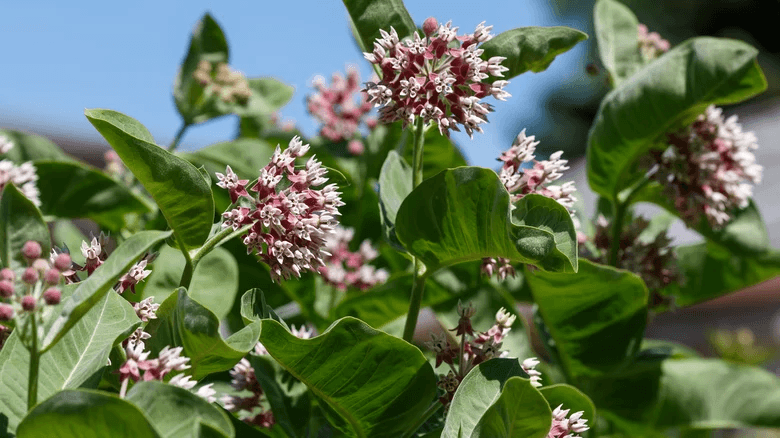
Despite the name, milkweed (Asclepias) isn’t a weed but a large genus with over 100 native species growing in the United States. It’s one of the best plants to help pollinators, as it’s the only flower monarch butterflies use as a host plant. Although hummingbirds sometimes drink nectar from milkweed, they’re more likely to grab one of the many insects attracted to it. The real benefit this species provides comes in late summer when it produces seedpods. When the time comes for seeds to spread, the floss inside expands until the pod opens. When this happens, hummingbirds take the soft fibers and use them to line their nests.
Common milkweed (Asclepias syriaca) is likely what comes to mind when thinking of the milkweed plant. This sweetly scented flowering perennial is hardy in zones 3-9 and is extremely easy to grow. Tolerant of poor soils, it thrives when planted in an area that receives at least eight hours of sunlight. Once established, it’s drought tolerant and can withstand dry soils, so rainwater is typically enough to keep it happy. Each plant grows up to four feet tall and about a foot wide, though it spreads through underground rhizomes and can quickly take over the area if not managed.
Clematis
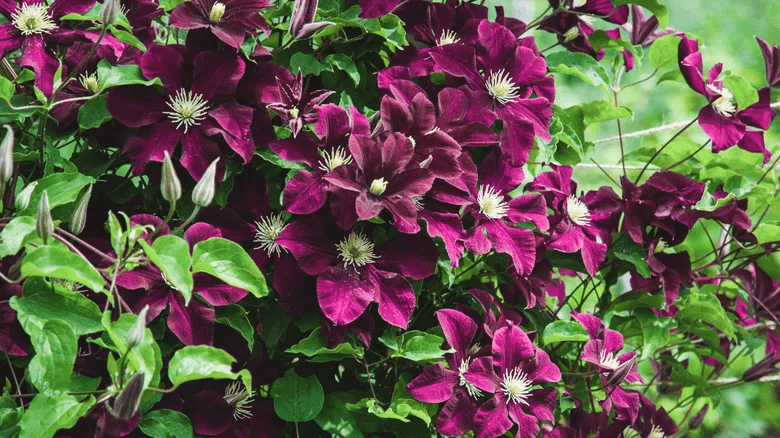
With around 380 varieties in the clematis genus, there are plenty of showy blooms to choose from. Abundant in nectar, these vines are the perfect addition if you want to attract pollinators. Not only do hummingbirds enjoy drinking from clematis blooms, but they also use them to build their nests. Once the flowering season comes to an end, feathery seedheads begin taking their place. Hummingbirds use the spent flowers and the soft seedheads to construct the inner layer. The plush material makes a cozy and secure environment, keeping their eggs and hatchlings safe and comfortable as they grow.
Proper care for clematis plants depends on the cultivar you choose to grow in your garden. Clematis have a diverse range of growth habits, with some climbing or spreading and others developing more like shrubs. Generally, they grow in zones 4-10 and thrive when grown in full sun, though some varieties can tolerate partial shade. They prefer a neutral to slightly alkaline soil blend. Although they like well-drained soil, it’s important not to let it dry out. However, they won’t be as thirsty once they’re more established.

